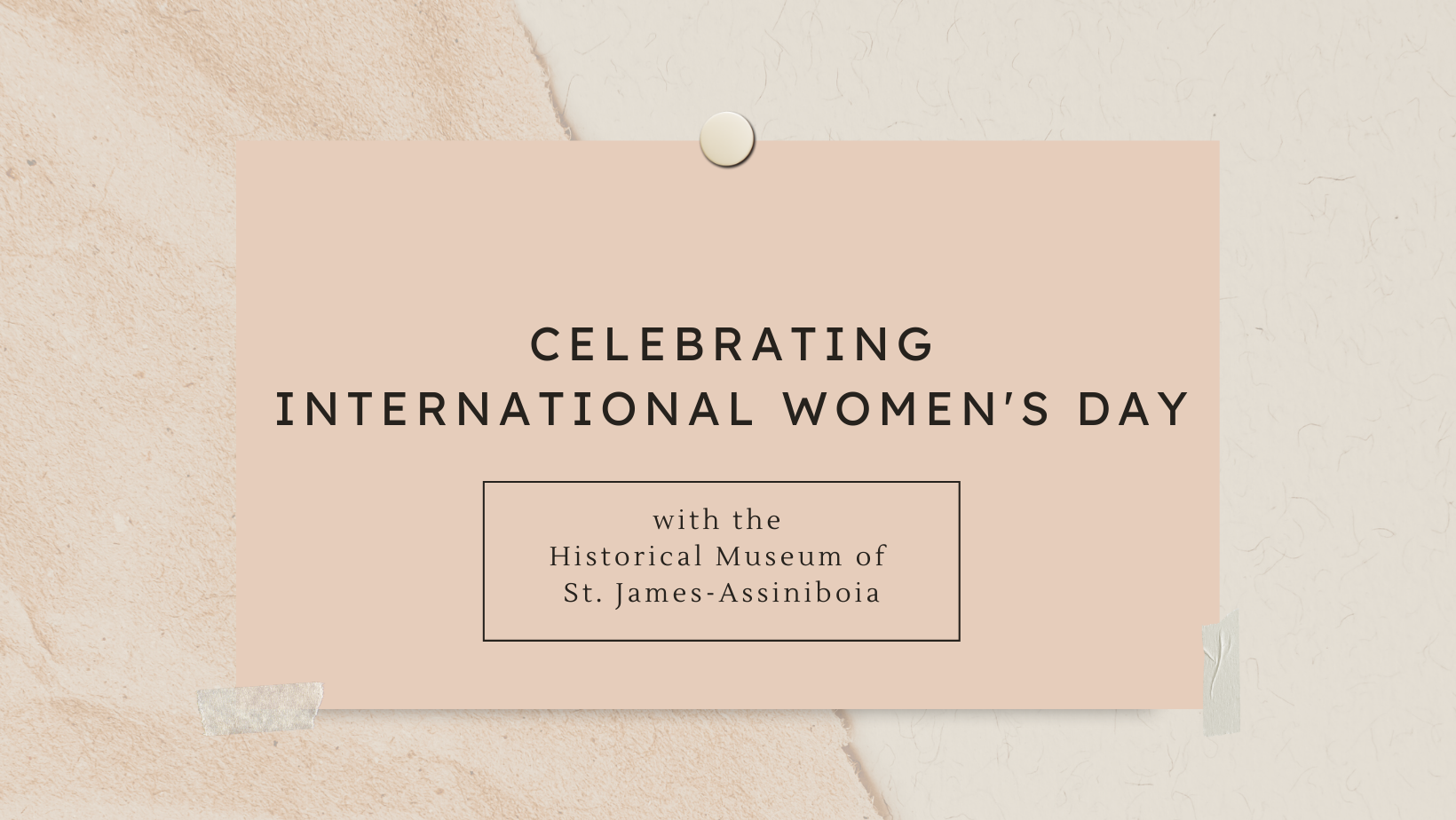International Women’s Day
Today we celebrate International Women’s Day by sharing the stories of women throughout history from right here in Manitoba.
Celebrating Indigenous Women through Storytelling, Music, and Dance
Indigenous culture and history has been passed down through oral storytelling, music, and dance. Barbara Nepinak and her husband Clarence, Order of Manitoba recipients and Museum Cultural Facilitators, have shared their culture with us throughout the years. Today, we celebrate all the Indigenous women sharing their culture with the next generation. Please join Barbara and Clarence Nepinak as they share stories of Indigenous Women and Peoples with us through storytelling, music, and dance.
Charlotte Taylor
Charlotte Taylor, daughter of John Taylor and granddaughter of Métis woman Charlotte Omand and Scottish immigrant William Brown, is the star of the Museum’s award-winning historical theatre. Join Charlotte as she introduces herself and tells us a bit about her life in the 1890s.
Lady Strathcona
Join our Executive Director and Curator as she walks you through our latest exhibit featuring a prominent women from our history, Lady Strathcona.
Annie Godkin
Annie Godkin was the wife of Joseph Godkin, the first Reeve of St. James in 1921. Join us here to learn about the beginnings of St. James and then hear from Annie Godkin.
Kathleen Livingstone

An actress, activist, and radio broadcaster, Kathleen ‘Kay’ Livingstone was a woman of many talents. She was known as one of Canada’s leading Black actresses in her lifetime, and had a career as the radio show host of her show ‘The Kathleen Livingstone Show.’
But Livingstone is probably best known for her passion for social activism, especially concerning the welfare of Black women. She joined several organizations that worked to promote the pride and advancement of Black communities. She was the organizer and chair of the National Congress of Black Women in Canada, the first meeting taking place in 1973. The Congress provided a platform for Black women to share their concerns and facilitate causes they believed in. Because of its outstanding success, the Congress began to hold further conventions in different provinces.
It was at the Winnipeg convention in 1980 that the Congress of Black Women was established as a national forum and foundation, and the organization remains today as one of Livingstone’s lasting legacies.
Livingstone also worked for the Privy Council of Canada as a consultant in the later years of her life. Her work for activism did not halt though, and in 1975 Livingstone began organizing a conference on visible minorities–a term whose origin she is credited with –in Canada. She had been travelling the country in preparation for it beforehand. However, Livingstone died in the same year.
Carrie Best, who had met with Livingstone on her travels, formed the Kay Livingstone Visible Minority Women’s Society in her honour after her death.

